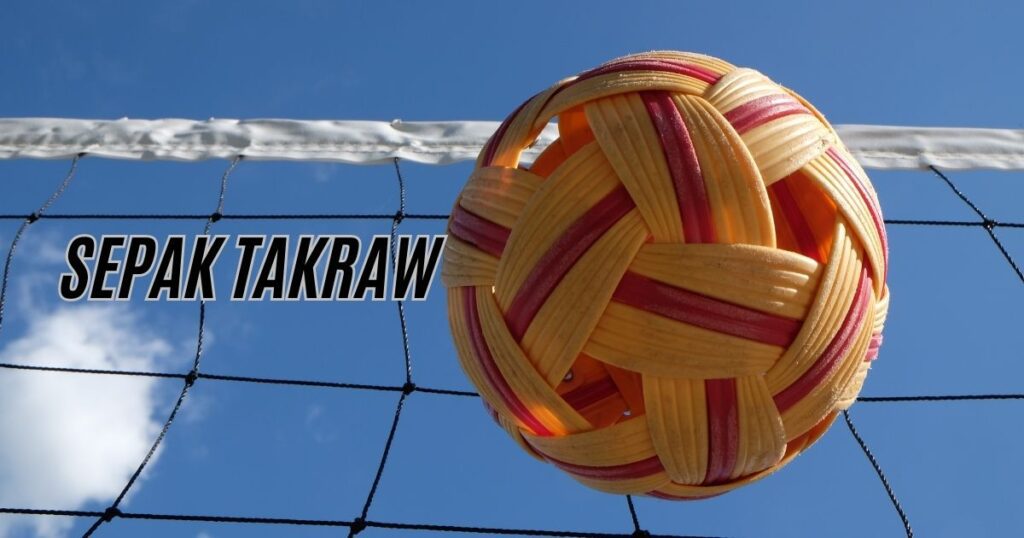Beyond mainstream competitive pursuits like football, basketball, and baseball, countries and cultures worldwide have developed unique and obscure sports over time. These peculiar pastimes offer adventurous travelers and curious sports fans glimpse into regional traditions. Here is a global exploration of some of the world’s most fascinating and unusual sports.
Chess Boxing – Germany
This hybrid sport combines the mental focus of chess with the physical demands of boxing for a full mind-body workout. Competitors alternate rounds of chess with rounds of boxing until a winner emerges either by checkmate or knockout.
Popularized in Berlin in the 1990s, chess boxing now enjoys niche appeal worldwide, especially in Europe. Fans praise its cerebral and physical contrasts. Matches offer spectators an unpredictable blend of tenacious tactics and thrilling fisticuffs.
Sepak Takraw – Southeast Asia
Native to countries like Malaysia, Thailand, and the Philippines, this competitive team sport is similar to volleyball but uses only the feet and head to touch the ball. Players show incredible agility and reflexes by doing acrobatic kicks, flips, and bicycle kicks to keep the rattan ball airborne.

With origins possibly dating back over 500 years, sepak takraw has grown from village pastime to a national sport, now governed by the International Sepaktakraw Federation. High-flying matches are punctuated by astonishing athleticism.
Bossaball – Spain
Bossaball combines elements of volleyball, soccer, gymnastics, and even capoeira dance into a unique sport using a specialized inflated court with trampolines and nets on each side. The trampolines allow players to launch themselves high into the air to spike, block, and acrobatically pass the ball over the net.
Created in Spain in 2005, baseball adds exciting aerial abilities to traditional court sports for true 3D gameplay. Volleybikes, headers, and player collisions punctuate the fast-paced matches. Its popularity has spread worldwide at beach resorts and as a demonstration sport.
Jai Alai – Basque Region and Latin America
This historic sport originating in the Basque region of Spain involves propelling a ball at high speeds using a long curved basket called a cesta. Players fling the rock-hard goatskin ball, called a pelota, against walls at over 150 miles per hour in attempts to ace past opponents.

Jai alai requires tremendous skill, coordination, and reflexes to gracefully catch and hurl the pelota with precision. Since expanding from Europe to Latin America in the 1900s, jai alai remains an iconic spectacle of speed and adrenaline.
Camel Racing – Middle East
Popular in the desert regions of the Middle East, camel racing sees riders speeding atop the humped beasts down sandy straightaways or ovals. Considered the official sport of the Emirates, camel racing is deeply ingrained in Bedouin tradition, dating back thousands of years.
Today’s camel races involve thoroughbred racing camels bred for speed bred from around the world. Camel races ranging from 3-10 miles take place on dusty tracks across the Arabian Peninsula, often accompanied by lively cultural festivals.
Extreme Ironing – England
Turning a mundane household chore into an adrenaline sport, extreme ironing combines daring stunts and scenic locales with freshly pressed apparel. Competitors pick challenging locations like mountaintops or forests to set up ironing boards and race to press items while navigating extreme conditions.
Created as a joke in England in the late 1990s, televised extreme ironing competitions have gotten millions of views on YouTube. The comedic spectator sport has achieved a cult following in Europe through exhibitions and events.
Underwater Hockey – South Africa

Also known as Octopush, underwater hockey’s origins trace to deep-sea divers in the 1950s challenging each other to hockey-like games on the ocean floor using weighted sticks to shoot around a sunken puck. The compact 6 vs. 6 matches take place in pools while players hold their breath.
Regulated since the late 1960s, underwater hockey has been played competitively at World Championships and as an alternative water sport. Players wear fins and snorkels to zip through the water in this physically demanding game of aquatic agility.
Cheerleading – Japan
While popular in the United States as spirited sideline support, competitive cheerleading itself has evolved into its own booming sport in Japan. With elaborate acrobatic tumbling, stunting, and dance choreographed to music, Japanese cheerleading ‘squads face off in dynamic tournaments to be crowned national champions.
Dozens of university cheerleading clubs drive the sport’s popularity. Top competitors perform remarkable midair twists and human pyramids with gymnastic precision and flair. Cheerleading’s global reach now includes over 100 countries.
Bog Snorkelling – Wales
This self-explanatory event held annually in Wales challenges athletes’ swimming skills and courage by having them dive into a murky trench cut through a peat bog and snorkel the 120-yard length as quickly as possible.

First conceived at a pub in the mid-1970s, the bizarre open-water swimming competition attracts hundreds of brave “bog snorkellers” and spectators who come to cheer competitors’ muddy emerge from the peat pits. Wales now proudly hosts the World Bog Snorkelling Championships.
Conclusion
This global tour of some of the planet’s most fascinating fringe sports proves humans will competitively turn just about any activity into a game. Many unusual sports have surprising origins driven by regional cultures and geography. While not likely to ever achieve mass appeal, these peculiar athletic endeavors demonstrate the endless creativity woven into our shared human drive for play. Checking out a distinctive local sport can provide travelers with a direct window into a destination’s heritage.
FAQs About Unusual Sports
What makes some unusual sports go on to gain popularity and grow globally while others remain obscure regional niches?
Traits that help a sport expand worldwide include having broad mainstream appeal, meeting Olympic criteria, attracting media coverage, securing corporate sponsors, and being easy for amateurs to play.
Do any major professional sports leagues exist for these unconventional sports?
A few like sepak takraw and cheerleading have structured competitive circuits and associations on regional levels. But most have not developed major commercialized pro leagues to date. Participation remains informal or lighthearted.
How do most early unusual sports first come into existence?
They often grow out of existing traditional practices, professions, or hobbies before competitive structures arise. Or they are invented as comical spoofs of everyday activity. Accessible tools at hand tend to inspire creation.
What key safety precautions go into events for more outlandish sports like extreme ironing or underwater hockey?
Organizers implement strict eligibility based on proven experience, certified training for the highest-risk sports, emergency personnel availability, and legal waivers. Rules aim to maximize safety within inherently challenging environments.
Why do some unconventional sports like Quidditch from fiction successfully cross over into real organized competition?
A whimsical concept resonating culturally, especially with young people, can gain momentum. Supporting organizations standardizing rules enable adoption. Existing sports infrastructures facilitate crossover too.
Besides providing entertainment, what potential cultural or economic benefits can unusual regional sports provide?
Sports relying on indigenous practices promote cultural heritage. Niche tourism attractions boost local economies. With development, some can provide national pride and expanded participation opportunities.




